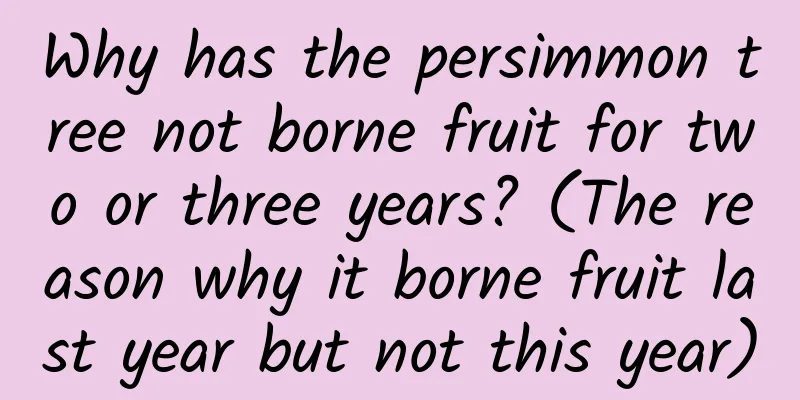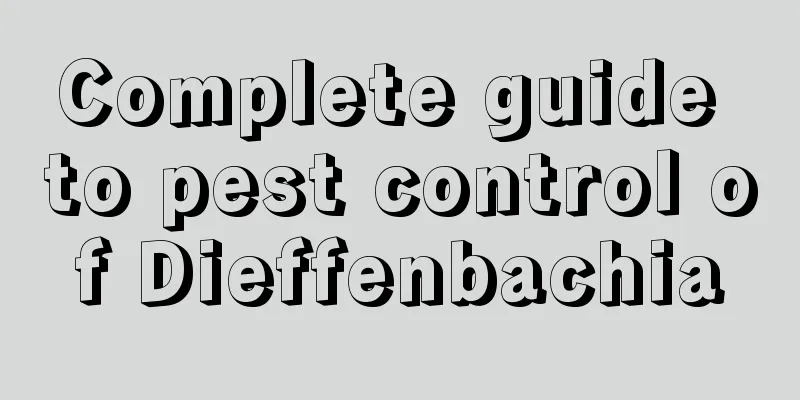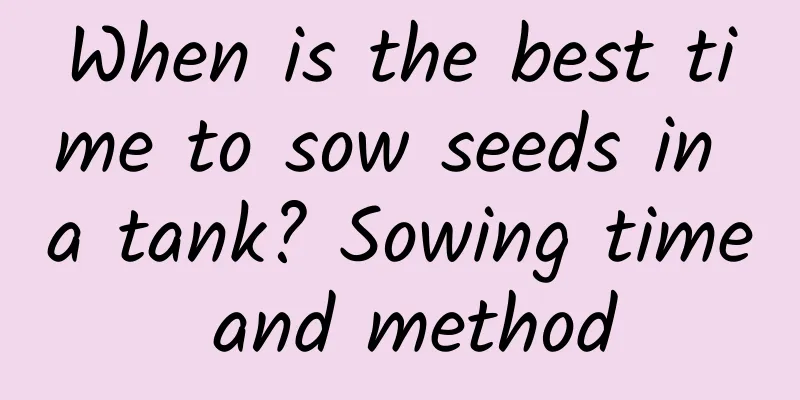Why has the persimmon tree not borne fruit for two or three years? (The reason why it borne fruit last year but not this year)

|
There are two persimmon trees in front of my house, one sweet and one astringent. The sweet persimmons are OK, but I have cut off the top of the astringent persimmons, leaving only the trunk, which I use as a clothes drying rack. There are many reasons why persimmons stop bearing fruit after a few years. The first reason is related to the robustness of the branches.Robust fruiting mother branches produce many fruiting branches that are long and sturdy. They not only have many flowers, but also have a high fruit set rate and large fruits. Therefore, the number and strength of fruiting mother branches are important factors affecting whether high yields can be achieved. The amount of fruit produced by the fruiting branches is also related to the bud position. Generally, the fruiting branches that emerge from the top flower buds have strong growth and fruit-bearing ability, while the fruiting branches that emerge from the side branches below the top flower buds gradually weaken. Therefore, if you want to prune a persimmon tree, try to keep the terminal buds of the fruiting branches. The second reason is related to the varietyThere are many varieties of persimmon trees. Generally speaking, small-fruit varieties have a higher fruit set rate than large-fruit varieties. The continuous fruiting ability of persimmon trees varies from variety to variety. After bearing fruit, the fruiting branches of most varieties consume a lot of nutrients and generally cannot continue to form mixed flower buds and become fruiting mother branches. Therefore, the fruiting branches have the phenomenon of bearing fruit every other year, which is also called the alternate year phenomenon. However, for some varieties, such as the pestle-headed persimmon, the terminal buds of the fruiting branches can form mixed flower buds while bearing fruit, and have a strong ability to bear fruit continuously. The third reason is related to pests and diseasesPersimmon trees often suffer from angular leaf spot, anthracnose, scale insects, etc., which can cause early leaf fall, affect tree vigor, and lead to insufficient fruit production. The fourth reason is related to insufficient lightThe poor fruiting of persimmon trees is largely related to insufficient flower buds, which in turn is caused by insufficient light, resulting in the mother branches being weak and unable to differentiate into flower buds. This type of mother branch should be pulled apart or thinned out to expand the distance between the main branches to improve the light inside the crown, and remove branches that are too dense. If flower bud differentiation is poor due to excessive nutrition and excessive tree vigor, it will be difficult to regulate the tree vigor by pruning. The only way to regulate it is to reduce fertilization or ring bark. There may be other reasons, but I can’t think of them at the moment, so I’ll just mention these. How to increase the fruit yield of persimmon treesFirst, soil improvementYour persimmon tree is planted at home, but you may rarely deep plow the soil, which causes the soil to become hard, not loose and breathable, making it impossible for the roots to take root deeply and absorb deep water and nutrients. If the soil can be deeply plowed, its root development will be improved, the amount of fertilizer can be reduced, and the fruit set rate will be better. Second, fertilizationIf the tree is weak, pay attention to fertilization, such as applying fertilizer to promote flowering, fertilizer to stabilize flowering and fruiting, and fertilizer to strengthen fruit, etc. The base fertilizer is mainly organic fertilizer, which is usually applied before budding in March or before fruit picking in September-October, and is supplemented with an appropriate amount of nitrogen, phosphorus and potassium compound fertilizer. The topdressing is mainly based on quick-acting nitrogen, phosphorus and potassium fertilizers, and the fertilizers are applied before flowering, after flowering and in June and July. In the late stage of fruit growth, that is, after mid-August, fertilization is applied. If topdressing is applied too early, it will stimulate the occurrence of autumn shoots. At the same time, pay attention to watering before flowering, watering during the fruit development period, watering during the swelling period and watering during the ripening period, and pay attention to drainage during the rainy season. Persimmon trees have the phenomenon of self-pruning, that is, when the branches of the persimmon tree grow to a certain length, the top growth point will die and fall off on its own, and stop growing. The axillary buds below will grow instead of the terminal buds. Therefore, the persimmon tree does not have a real terminal bud. This characteristic is called the "self-pruning habit" of the persimmon tree. Although persimmon trees have the habit of self-pruning, it does not mean that they cannot be pruned. You have to pay attention to winter pruning and summer pruning, such as thinning, scissor cutting, renewal pruning, bud removal, pruning narrow autumn shoots, pinching, etc. I will not go into details, you can search in my headline article. |
Recommend
Advantages and disadvantages of Vesalius rose: Is it a climbing rose or a shrub rose?
Vesalius is a shrub rose , a variety cultivated a...
How to water Brazilian wild peony
Watering tips for Brazilian wild peony Brazilian ...
When is the best time to sow the seeds of Chonglou
Planting time of Polygonum multiflorum Paris poly...
The difference between the fortune tree and the lucky tree, are the fortune tree and the lucky tree the same?
1. Variety differences The money tree and the luc...
What is used to graft plum blossoms?
1. Plum anvil Using plum blossom as rootstock is ...
Pests of chrysanthemum
Common pests of chrysanthemums Chrysanthemum aphi...
How to grow potted bergamot flowers at home (how to prune and propagate bergamot flowers by cuttings)
Buddha's hand flower is an evergreen small tr...
After the balcony was modified like this, there will be people who want it even for 1 million, don’t disbelieve it!
Balcony becomes restaurant The balcony has a wide...
How to fertilize Clivia and what fertilizer to use to make it bloom
1. Fertilization method 1. Base fertilizer: When ...
How to grow Staghorn Begonia in summer
Growth habit First of all, let’s talk about its g...
How to grow saxifrage
1. Maintenance conditions 1. Water: Give the saxi...
The difference between mountain peach and pink peach
1. Tree shape difference The mountain peach tree ...
Can Jade Plant be hydroponically cultivated? Hydroponics methods and precautions
Can jade tree be hydroponically cultivated? Jade ...
Do roses need to be watered every day?
Do you water roses every day? Roses need to be wa...
What fertilizer should be used for Clivia and how to propagate it?
1. What fertilizer to use When Clivia is a seedli...









